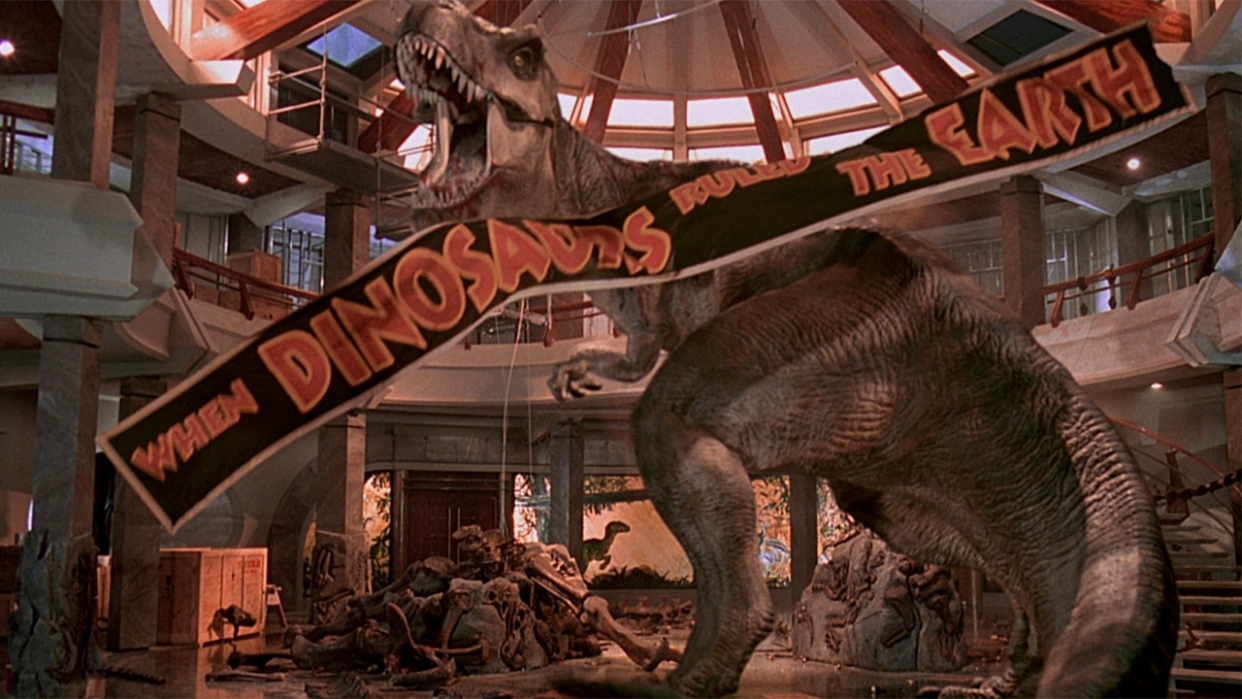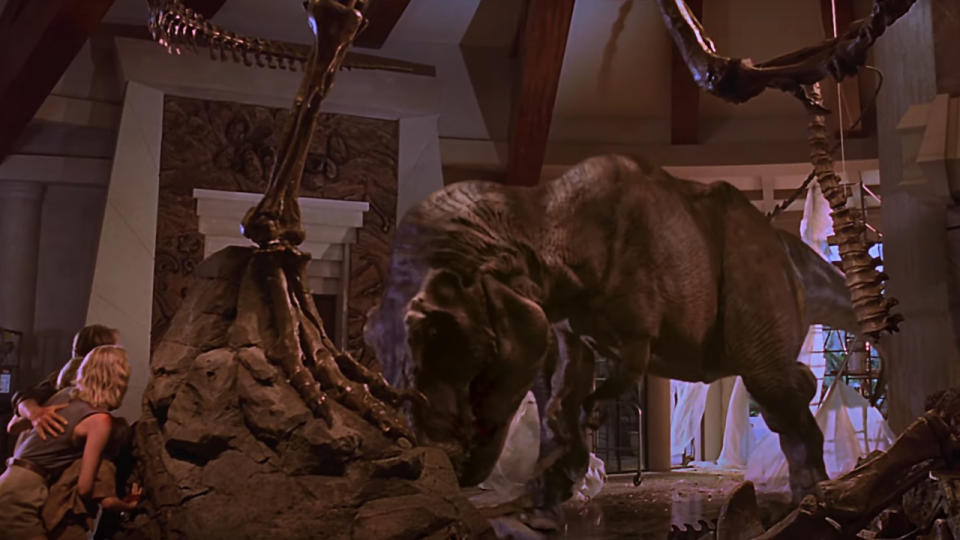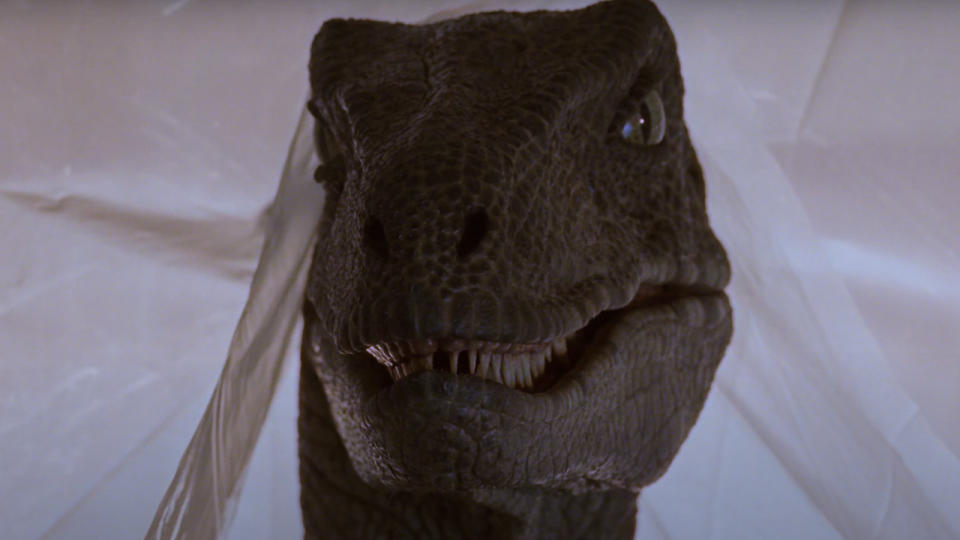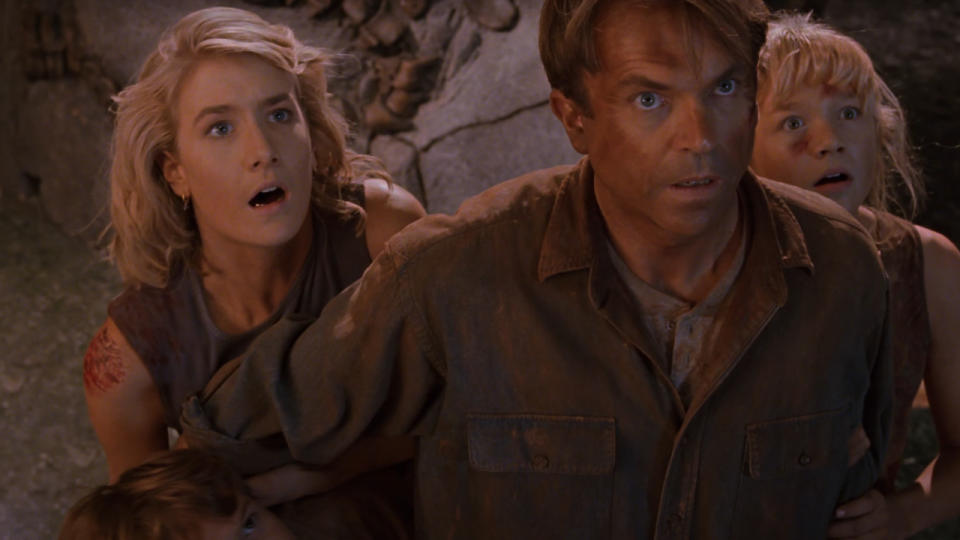Jurassic Park's Epic T-Rex Ending Almost Didn't Happen. Why That Changed

Even outside of my fandom-driven love of the Jurassic Park universe, it’s hard not to acknowledge the epic Tyrannosaurus Rex ending as one of cinema’s most iconic moments. With Roberta the T-Rex wrecking shop and becoming a hero, director Steven Spielberg stuck a pretty huge landing on one of the best sci-fi movies.
But believe it or not, that pop culture watershed almost didn’t happen. Were it not for emerging technology and some internal feedback, the push to make a good movie into something truly great may never have happened. Fellow readers, my dear Jurassic enthusiasts, welcome to the story of how Jurassic Park's landmark ending was almost never realized.

Jurassic Park’s Epic T-Rex Ending In A Nutshell
You and I both know that before we even set foot further into this discussion, we need to talk about how Jurassic Park ends. It’s a moment that deserves its place in Hollywood history, and you’re practically thinking about it right now. So if I were to just glance past it, it would only be cheating us all.
As Dr. Grant (Sam Neill), Dr. Sattler (Laura Dern), Lex (Ariana Richards) and Tim (Joseph Mazzello) are trying to evade a pack of raptors in the Visitor’s Center, our human heroes become surrounded in the lobby of the entryway we saw at the beginning of their journey. Surrounded by the feisty pack hunters, our friends look like they’re going to become a prehistoric buffet. Leading to the moment you see below:
Like a damned superhero in the nick of time, Roberta the T-Rex shows up and thrashes these hook clawed villains. The humans escape out of the Visitor’s Center, reunite with their friends and hightail it to the helipad to leave Isla Nublar in safety. Meanwhile, defeating her opponents, Jurassic Park’s star dinosaur lets out a triumphant roar, complete with a symbolic banner drop.
We all know that moment back to front, and it still makes me smile seeing it happen 30 years later. That being said, it’s something we should all treasure a little more preciously, as the ending to this adaptation of author Michael Crichton’s 1990 bestseller came from some last minute inspiration.

How Jurassic Park Was Originally Supposed To End
So how was Jurassic Park supposed to end? Well, that depends on what version of the story you look at, as there were several drafts kicking around in the race to make prehistoric history. Throughout its history, this first Jurassic installment saw Michael Crichton, as well as screenwriters Malia Scotch Marmo and David Koepp, all shaping the narrative. While Crichton and Koepp both got screen credit, it’s Koepp’s work that seems to have endured the most.
Reading through James Mottram’s Jurassic Park: The Ultimate Visual History, there are a couple variants that see John Hammond (Sir Richard Attenborough) either eaten by dinosaurs or simply abandoned on the island. As that character was softened from the psychopathic version in Michael Cricthon’s novel, some sympathy was found and the kindly old man with shaky business practices survived.
But the most substantial change came during David Koepp’s time revising the project, as Jurassic Park originally had one raptor pursuing our survivors in the Visitor’s Center. Rather than through a knock-down, drag-out fight with another dinosaur, that raptor was to meet its end in the jaws of a Tyrannosaurus Rex skeleton.
Sure, if you’d done that ending correctly, it might have worked. It’s a Jurassic Park conclusion that would have worked best in the original plan to bring the dinosaurs to life through stop-motion. Thanks to the last-minute switch up to breaking ground with CGI creatures, Steven Spielberg was inspired to give the note that would change it all.

What Made Steven Spielberg Change The Ending To Jurassic Park
Another variant of the Jurassic Park ending saw Roberta the Tyrannosaurus Rex chasing a Jeep right to the helipad, proving that this beauty seemed destined to shine in this up and coming franchise. Try as she might, the ending of her story didn't always see her as the heroic figure that saves the day.
Get ready for a story where CGI is the hero rather than the villain, as that was what handily helped dinosaur fan/director Steven Spielberg change his mind. As production designer Rick Carter recounted when interviewed for Season 2 of Netflix’s The Movies That Made Us, Spielberg’s decision to include more Rex-fueled action came from the following influence:
Steven was so enamored with the CG T-Rex that he said, ‘This is the hero of our movie.’
As for that original single raptor ending, the pressure to ditch that also came from the effects wizards who were working behind the scenes. Returning to James Mottram’s Jurassic Park: The Ultimate Visual History, the story goes that both Phil Tippett and Dennis Muren were non-plussed by that ending. Ok, so that’s putting it politely, as the book’s anecdote from Tippett on the matter contains words like “cheesy,” “dumb” and “sucks.”
With those notes in his head, and a new star on his mind, the E.T. visionary was ready to push for Jurassic Park’s final ending. Here’s how screenwriter David Koepp described the conversation that put it all into motion:
I remember [Spielberg] asking me to come down one day, and saying ‘Don’t you think we need to bring the big guy back? He’s working so well!’ It wasn’t that hard to do once you have an idea. It was far harder to execute than it was to write up.
With the shift to CGI dinosaurs over stop-motion now fully throwing its weight around, Jurassic Park needed to change its finale to account for a practically exploding skeleton, and performances where Sam Neill and his co-stars were pretending to see the beasts that weren’t present on set. There's nothing like the enthusiastic adoption of cutting-edge technology, complete with a rewritten ending that pushes the boundaries of said tech, to put a little pressure on the movie that was supposed to lose to Last Action Hero at the summer 1993 box office.
That’s not what happened though, as Jurassic Park opened on June 11, 1993 and proceeded to smash box office records left and right. Becoming the highest grossing film of the year internationally, it would also win three technical Oscars in 1994; including Best Visual Effects for Dennis Muren, Stan Winston, Phil Tippett and Michael Lantieri.
When the dust settled, life found a way to make a massive hit out of this hot property, landing a huge victory for CGI effects that still holds up. Jurassic Park defined the cinematic landscape of 1993, while also paving the way for the three decades and counting included in its entire legacy. Starting life as a book that Michael Crichton developed for almost a decade, a franchise starter for the ages arrived, and it’s still one of my favorite movies of all time.
I’d like to think that if the single raptor ending remained in place, I’d still have loved Steven Spielberg’s vision to bits. Thankfully though, that’s not a scenario any of us has to worry about. Roberta will always reign over the park when you get to the end, and that reality is even sweeter when digging into the decisions that spared no expense to make it all happen.
